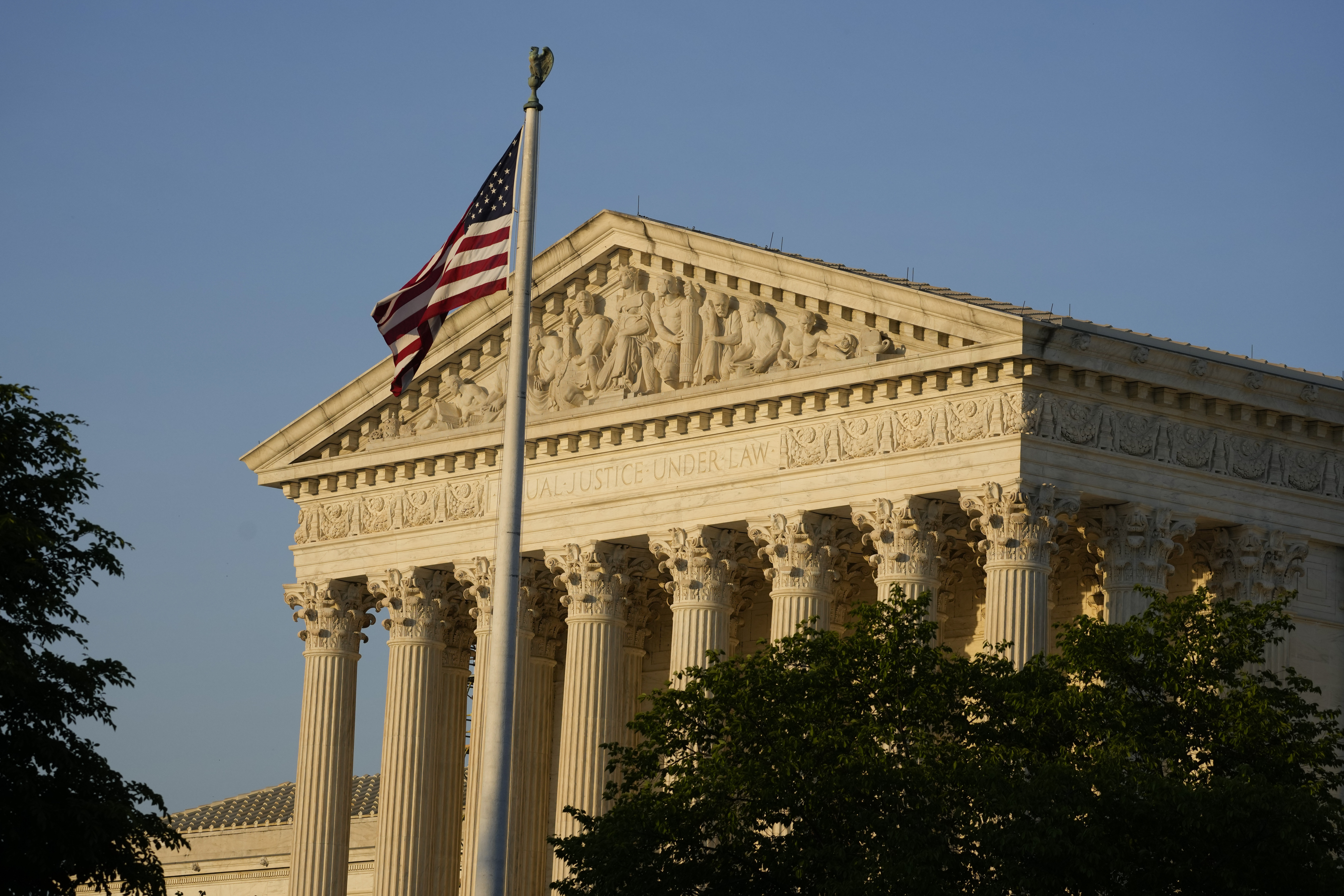The Supreme Court's term was significant, Trump decisions notwithstanding
Here are our takeaways from a term that could transform politics and policy for decades.

Former President Donald Trump won big this term at the Supreme Court.
In two blockbuster cases for Trump, the court squashed efforts to knock the former president off the 2024 ballot and granted him broad immunity from a pending criminal case accusing him of conspiring to overturn the 2020 election results.
But those were just a small fraction of the issues the court ruled on in a term that would have been momentous even without the Trump fights.
As the justices head out on their summer vacations, here are POLITICO's takeaways on a Supreme Court term that could transform American politics and policy for decades.
Trump’s three big winsWhile only two cases involved him personally, Trump actually tallied a legal trifecta at the high court this term. With his candidacy for the White House on the line and potentially his freedom, too, Trump got nearly all the relief he asked for — and more.
In March, the Supreme Court overturned a Colorado court decision striking Trump from the ballot as an insurrectionist. The quick ruling, delivered just 25 days after oral arguments, cut off the possibility of other states making similar determinations. The unsigned opinion was unanimous in its bottom line, though the three liberal justices grumbled that the ruling should have preserved the potential for federal courts to disqualify alleged insurrections.
Last week, the justices narrowed the application of a criminal obstruction statute used to prosecute hundreds of Jan. 6 defendants — potentially undermining two of the four charges brought by special counsel Jack Smith against Trump in the federal election subversion case.
Trump, of course, has contended for months that he has total immunity from all of the charges in that case. His novel immunity bid came up short in the lower courts. But the justices gave him a pair of tactical wins — first, in December, by declining to accelerate the immunity litigation, and then, in February, by taking up the issue on a slower schedule. Together, those procedural moves kept the election case on ice for months and all but guaranteed that it could not reach trial before November.
Finally, on Monday, the last decision day of the term, the justices announced their complex, largely 6-3 ruling: Trump — and every other president — is immune from criminal prosecution for actions taken in connection with their core constitutional powers — even if the actions themselves are flagrant abuses of those powers. The decision also made clear that many other “official” acts of a president cannot be prosecuted or even mentioned at a trial.
Trump had asked for outright dismissal of the indictment against him, which the justices denied. But many legal experts said the decision amounts to a near-total victory for Trump because the test the court sets out for “official” acts seems so lopsided that almost any activity by a president might qualify and wind up off-limits to prosecutors.
“This opinion is scandalous. I think it’s a ruse,” said Nancy Gertner, a lecturer at Harvard Law School and a former federal district judge appointed by President Bill Clinton. “The standard is impossible to meet. … This is word soup, whose purpose and effect is to immunize Trump.”
Amy Coney Barrett blazes her own trailWhen Trump appointed three justices to the Supreme Court — potentially cementing a conservative supermajority for a generation — some critics expected the new appointees to vote in lockstep with their conservative colleagues. But that hasn’t always been the case.
Justice Amy Coney Barrett broke with some or all of her GOP-appointed counterparts in a series of high-profile cases involving access to abortion pills, alleged censorship of conservatives on social media, and the legal fight over charges against hundreds of Jan. 6 defendants.
In the most closely watched case of the term — Trump’s immunity claim — Barrett was the court’s only conservative who did not join Chief Justice John Roberts’ majority opinion in full. She said her conservative colleagues went too far when they ruled that many of Trump’s acts as president couldn’t be presented in court as evidence of a crime.
“The Constitution does not require blinding juries to the circumstances surrounding conduct for which Presidents can be held liable,” Barrett wrote.
In a more obscure case involving crude anti-Trump T-shirts, Barrett wound up in an intense fight with the court’s oldest and longest-serving conservative, Clarence Thomas, over the use of history when interpreting statutes.
Some conservatives on social media now express regret for Trump’s choice, deriding her as “Amy Commie Barrett”— a moniker apparently bestowed in January when she joined Roberts and the court’s liberals in a 5-4 emergency ruling allowing the Border Patrol to cut through more than 100 miles of razor wire Texas placed at the Mexican border.
Federal agencies take brutal hitsWhile Barrett (joined at times by Roberts and Justice Brett Kavanaugh) has, in some cases, pumped the brakes on the court’s drive to the right, all six GOP-appointed justices kept full speed ahead this term on one key project: weakening the so-called administrative state.
Conservative legal activists who have been trying for decades to wrestle power from federal agencies scored a trio of wins at the high court.
Pro-business forces managed to achieve their long-sought goal of toppling Chevron deference, a doctrine derived from a 40-year-old precedent that instructed judges to defer to federal agencies’ views of their own authority as long as those positions are reasonable, even if the judge would have read the law differently.
The high court also delivered two other big blows to agency power: knocking out the Securities and Exchange Commission’s in-house judges and time limits for some challenges to federal regulations.
Liberal Justice Ketanji Brown Jackson called the latter ruling “profoundly destabilizing” and, as she read her dissent from the bench Monday, warned that the court’s actions this term have “the potential to devastate the functioning of the federal government.”
The court’s new ethics code proves toothlessAfter enduring months of withering criticism over justices accepting luxury vacations and other largesse from wealthy benefactors, Roberts managed to get the court to do something it previously wouldn’t: adopt a formal ethics code.
In November, all nine members of the court signed onto the eight-page document, although it was watered down from an earlier set of “principles” adopted by the same justices.
However, the lack of any enforcement mechanism became apparent in May when the New York Times reported that the American flag flew upside down at Justice Samuel Alito’s home in the wake of the Jan. 6, 2021, Capitol riot and that a Revolutionary War flag associated with Christian nationalism flew at Alito’s New Jersey shore home.
Citing the flag displays, Democratic lawmakers called on Roberts to force Alito to recuse from pending cases about Trump’s immunity claim and the dispute over the obstruction charge used against the former president and other Jan. 6 defendants. But the chief justice referred the request to Alito, who attributed the displays to his wife. Alito concluded his own recusal wasn’t warranted.
"The glaring omission in the Court's new code is the lack of enforcement, which is rich, seeing as how state supreme court justices and lower federal court judges seem to have figured this out,” said Gabe Roth of the pro-transparency group Fix the Court. “There's nothing stopping the Court from setting up and abiding by a similar rubric.”
The court's favorite new dodgeAs the high court faces criticism from some quarters for judicial overreach, the justices seem to be settling on a favorite way of wiggling out of politically sensitive and polarizing cases.
The method of the moment seems to be to avoid the touchy issue at the core of a case by declaring that those who filed it lacked the legal standing to do so.
The court employed this dodge to back away from two high-profile cases this term: a challenge to expanded access to the abortion pill and a lawsuit against Biden administration officials over pressure on social media companies to take down anti-vaccine messages and some political content deemed misinformation.
In the abortion pill case, the court concluded it was too speculative that anti-abortion doctors who filed the suit would encounter and be obligated to see patients with complications from the pills.
“There is no Article III doctrine of ‘doctor standing’ that allows doctors to challenge general government safety regulations. Nor will this Court now create such a novel standing doctrine out of whole cloth,” Kavanaugh wrote in the court's unanimous opinion.
And in the social media censorship case, the majority said the conservative activists who sued lacked standing to get an injunction because it wasn't clear the government’s cajoling was driving the platforms to take down certain content, nor was it clear that if the White House stopped hectoring the firms they would put disputed posts back up.
The decision to skirt the censorship case drew howls of dissent from the court's hardest-core conservatives, who accused their colleagues of a transparent cop-out in the face of ample evidence that the companies caved to the government.
“Standing is an important component of our Constitution’s structural design,” Alito wrote, joined by Thomas and Justice Neil Gorsuch. “That doctrine is cheapened when the rules are not evenhandedly applied.”
CL TROIB News












